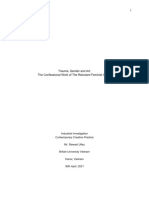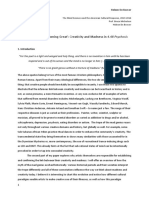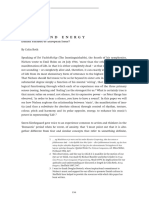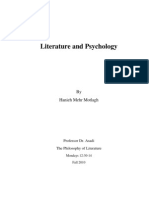0% found this document useful (0 votes)
1K views8 pagesHUM 102 Module Four Project Draft Template
The document discusses the significance of Edvard Munch's 'The Scream' and Sylvia Plath's 'The Bell Jar' in exploring themes of mental illness, identity, and societal pressures. It highlights the diverse perspectives and emotional depth presented in these works, while also addressing potential biases and assumptions related to mental health. Additionally, it examines how these creative works influence societal perceptions, empathy, and critical thinking regarding mental health issues.
Uploaded by
timmoh johnCopyright
© © All Rights Reserved
We take content rights seriously. If you suspect this is your content, claim it here.
Available Formats
Download as DOCX, PDF, TXT or read online on Scribd
0% found this document useful (0 votes)
1K views8 pagesHUM 102 Module Four Project Draft Template
The document discusses the significance of Edvard Munch's 'The Scream' and Sylvia Plath's 'The Bell Jar' in exploring themes of mental illness, identity, and societal pressures. It highlights the diverse perspectives and emotional depth presented in these works, while also addressing potential biases and assumptions related to mental health. Additionally, it examines how these creative works influence societal perceptions, empathy, and critical thinking regarding mental health issues.
Uploaded by
timmoh johnCopyright
© © All Rights Reserved
We take content rights seriously. If you suspect this is your content, claim it here.
Available Formats
Download as DOCX, PDF, TXT or read online on Scribd
/ 8

























































































